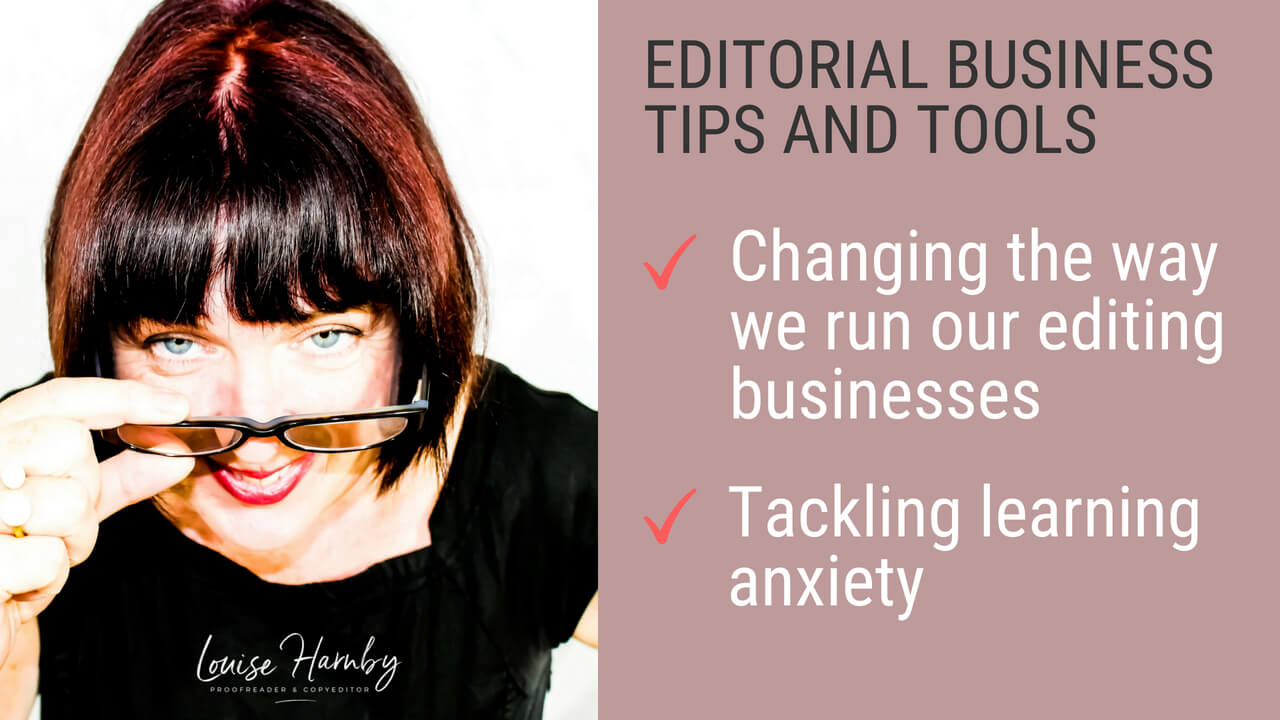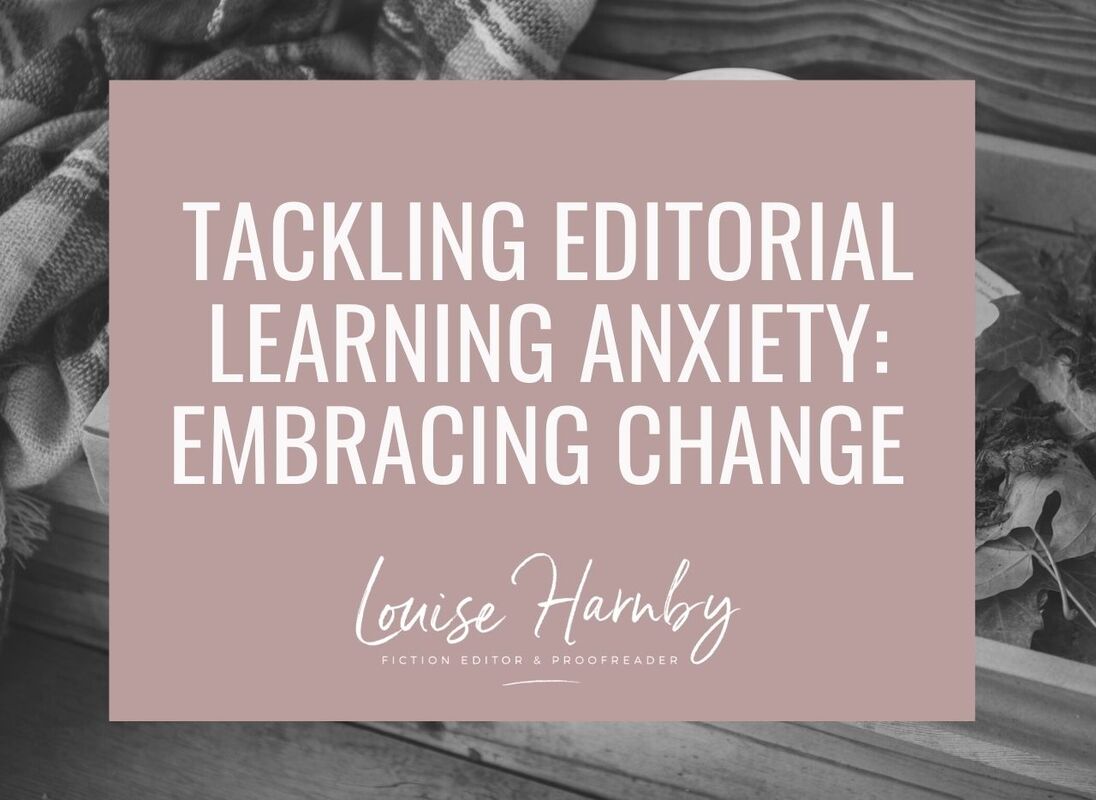|
In this article, I consider how resistance to change can stop us from learning new skills or testing new methods to make our editorial businesses more successful.
‘I’m not trying that!’
Editors, like any other professionals, can fall into the trap of resisting change – for example, not trying out a new marketing strategy; claiming they have no need for business tools such as macros; or refusing to take on work that requires using a new platform, software package, or format. All of us have either said, or heard one of our colleagues say, ‘I don’t work in that way,’ ‘That’s a bad idea,’ ‘I don’t like the idea of that,’ ‘That’s not the way I do things,’ or ‘I just couldn’t bring myself to do that’ at some point in our careers. We work in a highly competitive, crowded, and international marketplace. We’re business owners, not hobbyists. That means our businesses have to earn us a living. Our market isn’t static – it’s always shifting:
All of that means that resisting change and failing to learn the new skills or to try new methods (whether technical, promotional, or practical) simply doesn’t make sense for today’s editorial business owner. If we refuse to change, we refuse to compete – and that’s a path to business failure. Why do we resist change? According to psychologist Edgar H. Schein, Sloan Fellows Professor of Management Emeritus at MIT’s Sloan School of Management, it can be a result of ‘learning anxiety’ (Diane Coutu, ‘The Anxiety of Learning,’ Harvard Business Review, March 2002). Says Schein:
Learning anxiety comes from being afraid to try something new for fear that it will be too difficult, that we will look stupid in the attempt, or that we will have to part from old habits that have worked for us in the past. Learning something new can cast us as the deviant in the groups we belong to. It can threaten our self-esteem and, in extreme cases, even our identity.
Back in 2002, Schein discussed the issue in relation to the challenges of organizational change and transformation, corporate culture, and leadership. But that quotation can apply just as well to the editorial solopreneur in 2018. We may be anxious about making a change for fear of not doing it well; equally, we might have heard or read negative opinions from our colleagues about using a particular technical tool, testing a new marketing effort, or changing to a new way of working – and that makes us wary of being seen publicly to be trying such things, lest they draw negative attention. So how might we go about tackling learning anxiety so that we can embrace change rather than resisting it? There are several options:
Plan the change so that it’s considered and systematic If you think there are changes that should be made, or new skills learned, approach them as you would a business plan. By breaking the changes down into components, they will seem more manageable and less anxiety-inducing.
Redefine ‘failure’ as ‘lessons learned’ We must accept that change always brings risk. However well we plan change, however well it appears to meet our business objectives, the outcomes aren’t always what we hoped for or expected. The key here is to redefine those results in a positive light whereby ‘failure’ becomes ‘lessons learned.’
All those outcomes could occur; but it’s also possible – particularly if you’ve made thoughtful, informed decisions about what changes to test – that the following will happen:
And even if you do end up in the worst-case scenario, who’s to say that the changes you’ve made won’t reap rewards further down the line? Who’s to say that those colleagues who were disparaging about your efforts are correct in their assumptions? Being prepared to try new things is how we learn. When the outcomes are not as expected, that’s not failure; that’s information on which we can make future decisions about what not to do, what needs tweaking, and what needs retrying. Not being prepared to learn and change in a competitive market is more likely to lead to failure that trying something new. If you don’t try, you don’t know. There’s nothing wrong with trying something new, only to find that it didn’t work. Any normal human being trying to be creative when running their business is not going to get it right every time. And if things don’t go to plan, you’ll be in great company. Here’s Woody Allen: ‘If you’re not failing every now and again, it’s a sign you’re not doing anything very innovative.’ And here’s Thomas Edison: ‘I have not failed. I’ve just found 10,000 ways that won’t work.’ Do a cost–benefit analysis If you’re nervous about making a particular change, do a cost–benefit analysis by considering the following questions:
Working through these questions can highlight benefits and challenges, and help you to think through ways to maximize the former and minimize the stress of the latter.
Case study
In 2015, I tested a new marketing technique. I wanted to provide a quick way for the client to engage with me, a device that would give them a sense of immediacy ... a ballpark price for proofreading and editing that they could use to decide whether to continue the discussion. So I tackled the questions above, and the answers helped me to map out a solution that I could test. What are the potential gains from the change?
What will I potentially lose if I introduce a quick-quote function?
What will stay the same, even though I’ve made this change?
How will the changes make me feel once I’ve completed them?
My solution was to offer a 60-minute ballpark quote service via text messaging. I required a few words of description, a deadline, and a word count. I commited to responding within 1 hour to any request that came in prior to 10 p.m. GMT. I didn't want to have to carry around a tablet or laptop all the time because I wouldn't always have internet access, but my phone was always with me. I charge on a per-1,000-words basis for my proofreading, copyediting and line editing services so it was easy for me to calculate a ballpark price quickly. I'd reply to the client with the preliminary price and an invitation to continue the discussion, this time with a sample. At that point, I’d be able to demonstrate the value I can offer. I placed this quick-quote service on a dedicated Contact page of my website, and included testimonials on the page so that clients had a sense of the quality of service I offer. Early results and later changes When I first set up this tool in 2015, the early results were encouraging. In the first month, I had around 20 enquiries via text messaging, 4 of which led to commissions to proofread or copyedit works of self-published fiction. I also acquired a small, fast-turnaround job for a business client. I turned down requests to proofread a business book and several theses, owing to the time frame. Over the next two years the focus of my business shifted to editing exclusively for indie fiction writers. I no longer accepted work from publishers, businesses, students or academics. Something else shifted too. The clients I was attracting weren't using the messaging option to get in touch. They were using my contact form, email or phone. This coincided with a much tighter rebrand of my website, so I suspect I was appealing to a different kind of client ... someone who wanted to talk. I decided to remove the quick-quote messaging tool. Still, I’m delighted that I found and tested a creative solution to my earlier resistance. I’m even more delighted that the outcome was positive for a couple of years. My fears about what I’d lose were overshadowed by the decisions I made on how to manage the service:
Even more importantly, perhaps, carrying out this exercise forced me to think more broadly about how client trust relates to pricing transparency. Taking professional responsibility Resistance to change is a normal human emotion. However, we are business owners. We work for ourselves. There’s no one in the HR department to walk us through the changes we might need to make even though we feel nervous about them. Change is inevitable. The fact that it can be anxiety-inducing needs to be acknowledged. The key is to ensure that anxiety doesn’t get in the way of action. The decisions I made about pricing transparency will not be something all my colleagues will agree with or want to implement. That’s fine – they have their businesses to run and I have mine. They make the decisions that are best for them while I make the decisions that are best for me. Still feel reluctant to make a change, or learn something new?
Chances are you’ll be pleasantly surprised by the results. Whatever happens, you’ll know that Woody and Thomas would pat you on the back for it! This is an updated version of an article originally published on An American Editor.
Louise Harnby is a line editor, copyeditor and proofreader who specializes in working with crime, mystery, suspense and thriller writers.
She is an Advanced Professional Member of the Chartered Institute of Editing and Proofreading (CIEP), a member of ACES, a Partner Member of The Alliance of Independent Authors (ALLi), and co-hosts The Editing Podcast. Visit her business website at Louise Harnby | Fiction Editor & Proofreader, say hello on Twitter at @LouiseHarnby, connect via Facebook and LinkedIn, and check out her books and courses.
2 Comments
20/9/2018 09:38:01 pm
Excellent points. I gravitated to your comment about confidence. I've found at my old ripe age that, while there are some areas I don't like to leave my comfort zone for, in general I have become bolder and have a What's the worst that can happen? approach to business changes and trying new things. Thanks, Louise!
Reply
Louise Harnby
22/9/2018 04:12:49 pm
Thanks, Vanessa! I so agree! I've found that taking one step out of my comfort zone makes it easier to take the next one. Two years ago, I wouldn't have dreamed of doing a podcast interview - it scared me too much! But then I did it anyway, and that gave me the courage to do video. And doing video helped me overcome my anxiety about speaking in public. Those things are still challenges but they're no longer impossible. I love your what's-the-worst take on this!
Reply
Leave a Reply. |
BLOG ALERTSIf you'd like me to email you when a new blog post is available, sign up for blog alerts!
TESTIMONIALSDare Rogers'Louise uses her expertise to hone a story until it's razor sharp, while still allowing the author’s voice to remain dominant.'Jeff Carson'I wholeheartedly recommend her services ... Just don’t hire her when I need her.'J B Turner'Sincere thanks for a beautiful and elegant piece of work. First class.'Ayshe Gemedzhy'What makes her stand out and shine is her ability to immerse herself in your story.'Salt Publishing'A million thanks – your mark-up is perfect, as always.'CATEGORIES
All
ARCHIVES
July 2024
|
|
|
|

















 RSS Feed
RSS Feed





